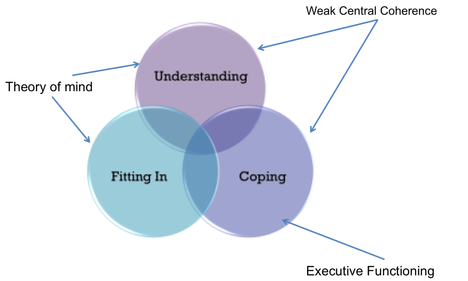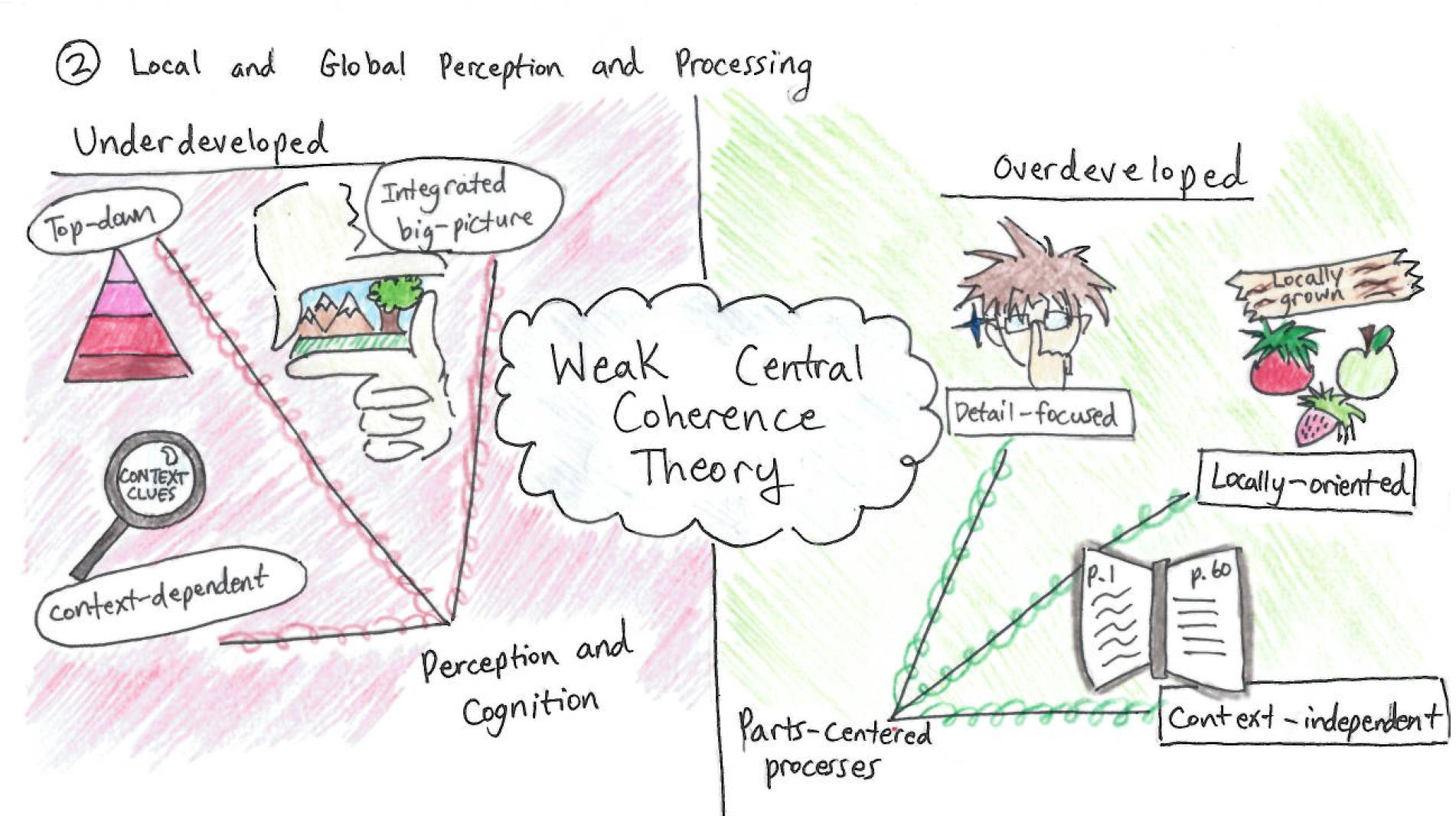
In 2003 they did another study which confirmed their earlier findings and in which they conclude: "Contrary to expectations based on the central coherence and hierarchisation deficit theories, findings indicate intact holistic processing among persons with autism." Stauder and Philippe Robaey (1999) conclude that: Autistic subjects performed as well as controls on tasks requiring global-local processing and inhibition of neutral responses." "The performance of high-functioning autistic children was compared with that of two matched control groups, one with Tourette Syndrome and the other developmentally normal.

McMahon and Francis Filloux compared information processing skills in high functioning autistics and controls: There are researchers who find results that refute the WCC theory. However, there is currently no consensus about the validity of the weak central coherence theory.

In addition, they performed Embedded Figures Tasks in which hidden shapes in drawings have to be found as quickly as possible, better than control individuals (Happé, 1994b Jolliffe & Baron-Cohen, 1997 Shah & Frith, 1983). For example, autistic individuals perceived the constituent blocks in an unsegmented condition of a Block Design Task more easily (Happé, 1999 Ehlers et al., 1997 Shah & Frith, 1993). Autistic individuals performed tasks where a design or a figure had to be divided into their constituent parts faster than control individuals. Results in which these skills are measured with visuospatial tasks confirm the theory to a large extent.In the last two decades, this theory has been a topic in many studies in which the central coherence skills of individuals with autism are compared to those of control samples. Her hypothesis is that autistic children actually perceive details better than neurotypical people, but "cannot see the wood for the trees." Frith surmised that autistic people typically think about things in the smallest possible parts. Uta Frith, of University College London, first advanced the weak central coherence theory in the late 1980s. The theory is among the more prominent conceptual models that try to explain the abnormalities of autistic individuals on tasks involving local and global cognitive processes. The weak central coherence theory attempts to explain how some people diagnosed with autism can show remarkable ability in subjects like mathematics and engineering, yet have trouble with language skills and tend to live in an isolated social world.

Autism is a neurodevelopmental disorder characterized by impaired social interaction and communication, as well as repetitive behaviours and restricted interests.

The weak central coherence theory ( WCC), also called the central coherence theory ( CC), suggests that a specific perceptual- cognitive style, loosely described as a limited ability to understand context or to "see the big picture", underlies the central disturbance in autism and related autism spectrum disorders.


 0 kommentar(er)
0 kommentar(er)
